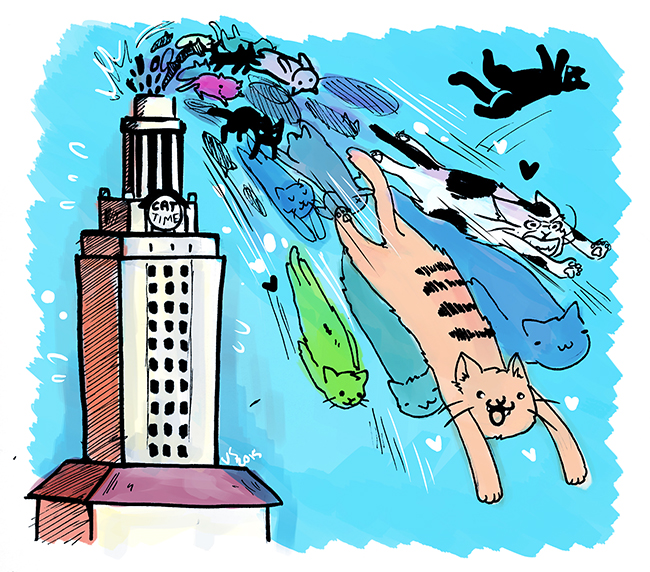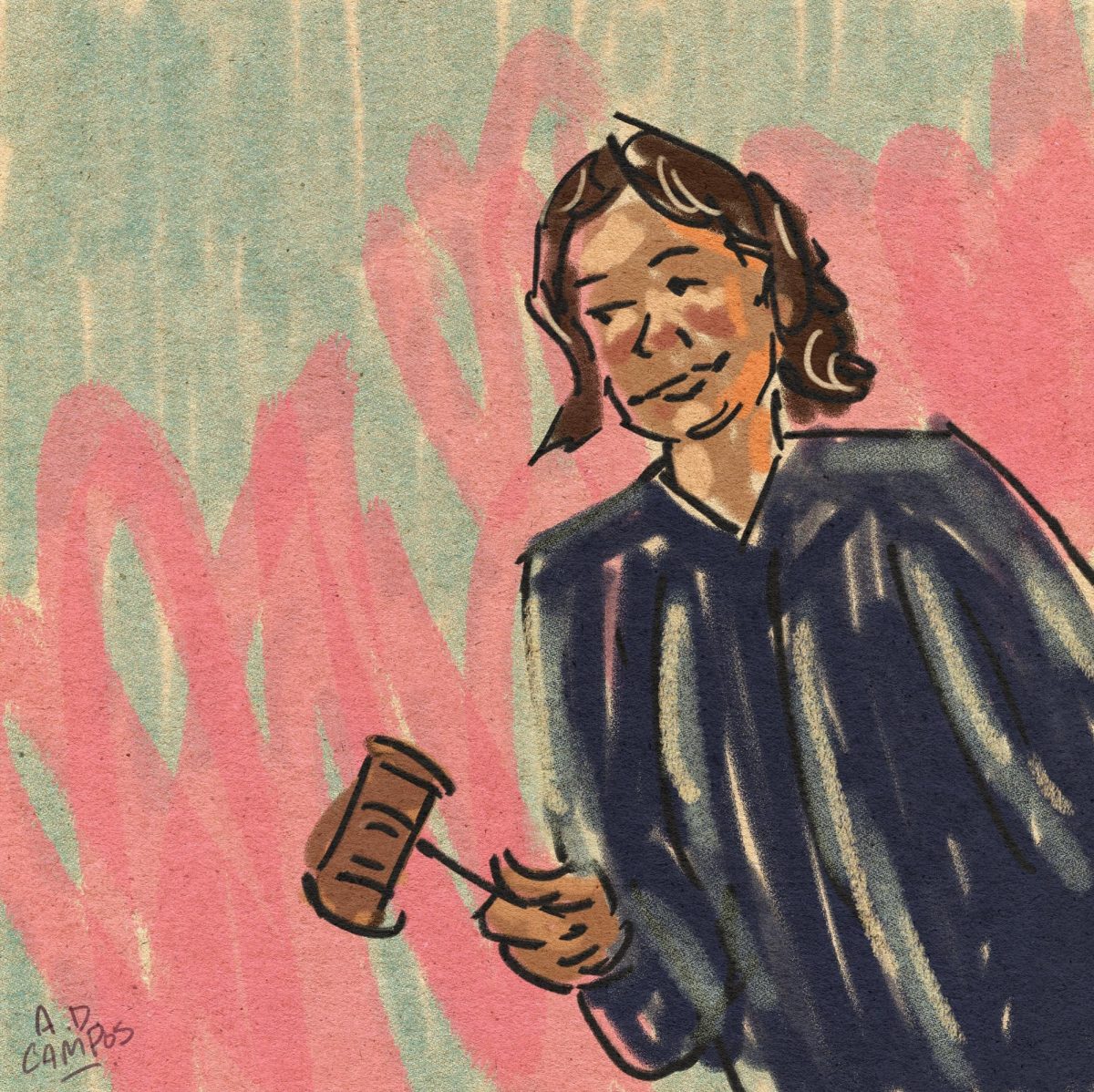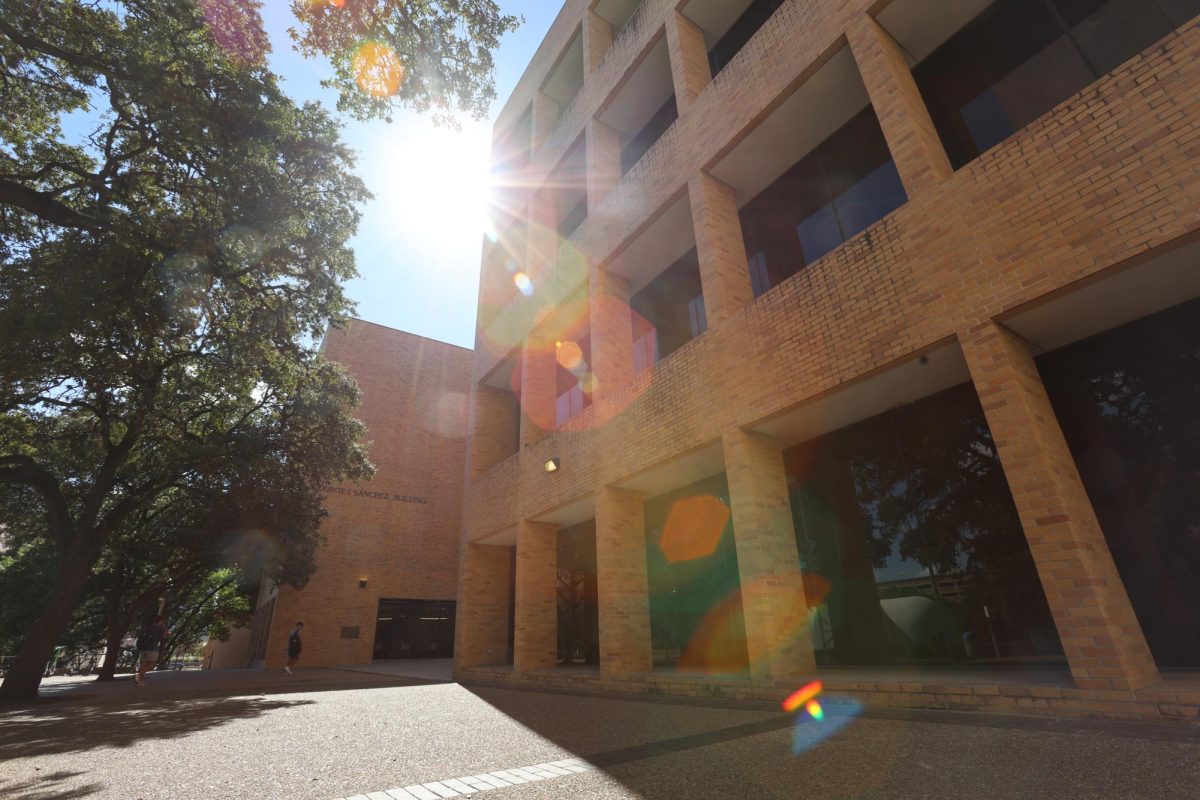Some stray and feral animals may have a temporary home on the UT campus.
One of the more noticeable animal populations on campus is the cat population, which is mostly feral, according to Carin Peterson, training and outreach coordinator in the environmental health and safety department. Feral cats have had no contact with people or have lost contact with people for a long period of time, whereas stray cats have recently been without contact with people because they have been lost, abandoned or have “strayed.”
UT does not relocate feral cats, but they do try to find an owner for stray cats that are found and reported, Peterson said.
“[The feral cats] have an area, a territory if you will, that they are comfortable with and rarely roam far. Cats in these colonies are managed by volunteers who feed and water them and also practice Trap-Neuter-Return,” Peterson said in an email. “TNR stabilizes the colony, identifies cats who can be socialized and adopted, and controls the influx of new strays/ferals who may bring health issues with them.”
Specific locations of the cats could not be identified for the safety of the animals, Peterson said, but they can be found all around campus.
“Waller Creek, which runs through campus, serves as a natural pathway for many animals,” Peterson said. “The campus is surrounded by neighborhoods which often contribute to strays found on the fringes of campus.”
Peterson said if a stray animal is found on campus, the animal is checked for tags or a microchip and local lost pet ads are searched in order to locate the owner. If an owner for an animal is not found, it is taken to the Austin Animal Center, where Peterson said “most residents know to look for lost pets.”
The animal is then left in the shelter for three days, and, if the owner does not pick it up within that time period, the animal is put up for adoption, according to Patricia Fraga, spokesperson for the Austin Animal Center. Fraga said UTPD and the environmental health and safety department have jurisdiction over campus strays and feral animals.
“We have, on occasion, assisted [UTPD] with an animal impound or animal bite incident, but that was at their request,” Fraga said.
Libby Griswold, geosystems engineering and hydrogeology freshman, said she has seen a white cat with spots and a black cat around campus. Griswold said she likes the cats and has only had friendly experiences with them.
“Stray cats are common in Austin, and as long as they’ve been fixed, they seem to do well on their own outside,” Griswold said. “All the ones I see don’t look skinny or sick, so I think we should leave them be besides fixing and releasing them.”
Although the animal population at UT can be vast, very few in the UT community have complaints, Peterson said.
“The calls we receive are usually out of concern for a stray animal,” Peterson said. “Many in our campus community will go out of their way to help reunite a lost animal with its family.”





















